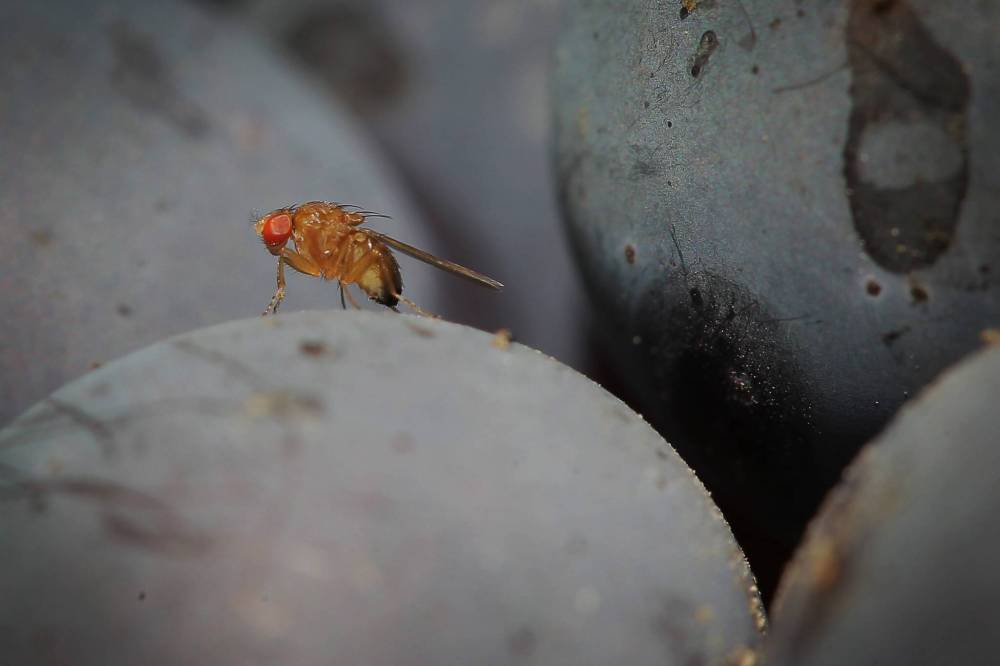Fruit flies impact Manitoba berry crops
Advertisement
Read this article for free:
or
Already have an account? Log in here »
To continue reading, please subscribe:
Monthly Digital Subscription
$0 for the first 4 weeks*
- Enjoy unlimited reading on winnipegfreepress.com
- Read the E-Edition, our digital replica newspaper
- Access News Break, our award-winning app
- Play interactive puzzles
*No charge for 4 weeks then price increases to the regular rate of $19.00 plus GST every four weeks. Offer available to new and qualified returning subscribers only. Cancel any time.
Monthly Digital Subscription
$4.75/week*
- Enjoy unlimited reading on winnipegfreepress.com
- Read the E-Edition, our digital replica newspaper
- Access News Break, our award-winning app
- Play interactive puzzles
*Billed as $19 plus GST every four weeks. Cancel any time.
To continue reading, please subscribe:
Add Free Press access to your Brandon Sun subscription for only an additional
$1 for the first 4 weeks*
*Your next subscription payment will increase by $1.00 and you will be charged $16.99 plus GST for four weeks. After four weeks, your payment will increase to $23.99 plus GST every four weeks.
Read unlimited articles for free today:
or
Already have an account? Log in here »
Hey there, time traveller!
This article was published 22/07/2024 (498 days ago), so information in it may no longer be current.
The fruit flies are here — and they’re disturbing the economy.
Recent weather has been great for spotted wing drosophila, vinegar flies notorious for damaging fruit crops. Now, the population has reached “economically damaging levels,” according to a Manitoba Agriculture fruit crop report released last week.
It’s the case for Edith Smith, co-owner of Prairie Adventure Farm. The fruit fly problem is the worst she’s seen in her 13 years of growing sour cherries.

The bugs have infiltrated two-thirds of her Carman farm’s two-acre cherry orchard, she estimates. “We’re just trying to get the fruit off as quickly as we can.”
It’s not a complete loss — some people can make jam with the cherries once they’ve picked through — but most have to be thrown away, she added.
Regular fruit flies feed on rotting, overripe fruit. Spotted wing drosophila, instead, lay eggs in ripening berries. When the eggs hatch, they make the berries soft.
The pesky flies have made their way into all types of fruit crops currently being harvested: strawberries, sour cherries, saskatoons and raspberries, the province’s report reads.
It isn’t a new problem, nor is it the worst it’s ever been, according to Anthony Mintenko, Manitoba Agriculture fruit crops specialist.
The bugs weren’t so bad during the past dry years. However, berry yields typically weren’t as big as this year either, Mintenko noted.
Spotted wing drosophila started becoming a problem for Prairie Adventure Farm around seven years ago. The bug spread from Asia into the United States, and then to Canada’s berry-producing provinces.
Smith has treatment to curb the bug, but she doesn’t plan to use it now — she’d have to keep customers away for three to four days amid the end of picking season.
“A lot of customers have come into U-pick knowing there’s a problem and knowing they’ll have to sort through them,” Smith explained.
The pests have hopped to Prairie Adventure Farm’s raspberry bushes. Raspberries are a minor part of the business and a near write-off this year; the bushes are also affected by fire blight, a bacterial disease that “just loves wet weather,” Smith relayed.
The precipitation has been good for rebuilding soil moisture levels, she noted, adding it made getting to the crops more difficult.
“Compared to last year, we’re thriving as opposed to surviving,” Mintenko said of general berry yields.
The province released its memo on spotted wing drosophila to alert producers and encourage them to use their typical controls against the bug, Mintenko said.
The number of fruit flies varies on a farm-to-farm basis, but Manitoba populations are seemingly higher south of the Trans-Canada Highway, he said.
Berry-pickers can stop spotted wing drosophila activity from occurring in their fruits by placing berries in the fridge. Raspberries are most commonly affected; strawberries and saskatoons, which are nearing the end of picking season, are least often hit, according to Mintenko.
The Purple Berry Orchard didn’t find any spotted wing drosophila in its saskatoon berries. The picking season was shortened by the rain, lasting roughly a week this July, said owner Brent Wolfe.
gabrielle.piche@winnipegfreepress.com

Gabrielle Piché reports on business for the Free Press. She interned at the Free Press and worked for its sister outlet, Canstar Community News, before entering the business beat in 2021. Read more about Gabrielle.
Every piece of reporting Gabrielle produces is reviewed by an editing team before it is posted online or published in print — part of the Free Press‘s tradition, since 1872, of producing reliable independent journalism. Read more about Free Press’s history and mandate, and learn how our newsroom operates.
Our newsroom depends on a growing audience of readers to power our journalism. If you are not a paid reader, please consider becoming a subscriber.
Our newsroom depends on its audience of readers to power our journalism. Thank you for your support.


